Fiction
Nonfiction
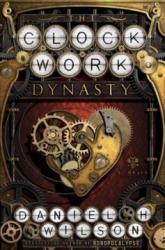
When I picked up this book, I have to admit, I was surprised, because sci fy steam punk fantasy stories is not the type of book I usually read, yet it ended up being so much more than I had imagined. The Clockwork Dynasty is not just a book about a race of humanlike mechanical creatures or avtomats that secretly live among us and are fighting a war that has raged for centuries, but it’s a story about life and the constant search for meaning and purpose.
This book waffles back and forth between present day Orgon, Washington and other places, and the 1700’s beginning in Russia and taking the reader on a journey through history and time. And while this may bother some people, the non-linear storytelling I think, adds so much more to the book and allows the author to unfold the story in a deeper more meaningful way.
In present time it follows the story of June someone who has made a career in ancient technology, ever since an encounter she had a child with her grandpa changed her perception of the world and started her fascination with this avtomat technology. A couple years after her grandfather’s death she receives a avtomat artifact that will cause her to team up with an avtomat named Peter, launch her into a great adventure in the secret avtomat
world, and ultimately determine this race’s extinction or survival. In
the 1700’s it follows the story of brother (Peter) and sister (Elena) two humanlike avtomats that were resurrected by a Russian clock maker using something called an anime which serves as the Avtomat’s heart and soul. As they live through the years they spend it hiding their secret, trying to blend into society, and fighting a war that has been raging among their own race for centuries.
This story explores the character’s constant search for meaning in a way that is both at times sad and extremely insightful. In the book each avtomat’s anime is marked with a Pravda or a special word that is their bond and command. As long as they satisfy their Pravda, they are at peace, otherwise they suffer. In Peter’s case this word is justice. As the book progresses we see his idea of justice shift and change as he lives through the years. Through a fascinating inner dialogue, Peter perception shifts from gaining justice simply by serving rulers in war to something far deeper and more moving, as this quote, when he encounters a dying soldier on the enemy’s side in the battlefield, suggests:
“Once Pravda was clear to me. By obeying my emperor all was well. But what was simple is becoming complex. I can see no evil inside this grievously wounded man, only honor. And though no clockwork flutters beneath his throat, I can see the inevitable forces that led him here, through no fault of his own, fating him to die in the shadow of this crumbling wall.”
As the book progresses a new perspective of right and wrong emerges leaving him questioning not only who he is but why he was made.
Another major theme this story also explores is the theme of war. As Peter recounts from his past, countless experiences on various battlefields throughout his life, and in the present, his own thoughts on his own race’s war; the reality of war is pressed heavy on the reader making this book at times very depressing, sad, and dark.
This reality is made even more real by the moving prose and incredible worldbuilding that takes place throughout the book. Another reason I love this book is the incredible character development between Peter and Elena.
How she is treated by him as a little sister at the beginning of the book, and how he sees her changes through the book from a little girl needing his protection to a sophisticated, wise learned, woman who’s one desire is to make her own way in the world is absolutely incredible. Daniel H Wilson does an amazing job of weaving together past and present into an engaging literary story that has something for everyone. Thank you to Doubleday books and Netgalley for an e- ARC in exchange for an honest review!
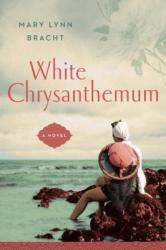
This was a very difficult book to read, but it was so beautifully written. Dual timelines tell the story of sisters separated by war. You will learn Hana's story from 1943 in Korea when she is taken by Japanese soldiers to become a "comfort woman" in Manchuria (the details of which are haunting).
Hana's sacrifice allows her younger sister, Emi, to stay on their island home off the coast of South Korea, but she is also tormented by the effects of World War II and the Korean War. We meet Emi as an older woman in 2011, still trying to find out what happened to her sister. Both stories are compelling and heartbreaking, but showcase the strength of these women to survive. Highly recommended.
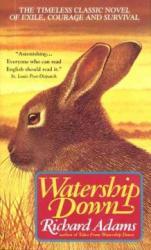
In an ever-increasing list of books I failed to read as a child, I finally managed to get to Watership Down. While I am aware that many people speculate the true meaning of the book to be an allegory for Nazis or Communism, or whatever, the prologue provided by the author in this edition stated that it was merely a bedtime story for his children. With this in mind, I’m sure many subconscious influences led to some of the themes in Watership Down.
Either way, the story seemed to be a rambling series of events that didn’t have much of a point or purpose.
Let’s be clear: I like rabbits. I think they’re cute, and I even own two of them. Therefore, I appreciate the little details of lagomorph mannerisms sprinkled throughout. And yet, there were a few confusing choices made in this book, like giving a somewhat-confusing “rabbit language” that rarely had context, and was mostly abandoned by the end of the book. I also couldn’t buy into the idea of a “rabbit army” since most of the rabbits I’ve seen in the wild have been mostly solitary animals, and hardly in the numbers described in Watership Down.
When it comes right down to it, the thing that perhaps disturbed me the most about this book was the anthropomorphism of the rabbits. Sure, the “side stories” about El-Ahrairah were distracting and often unnecessary, and I couldn’t honestly tell you the character traits or attributes of any of the numerous rabbits, but the fact that they could talk to each other made them seem somewhat human. Consequently, this then introduces ideas like war and sex trafficking via the “innocent” covering of rabbits. I feel these tend to be mostly human traits, so it pulled me from the story when I had to remind myself, “Wait, these are rabbits.”
A meandering story that puts humans in rabbit bodies, I give Watership Down
2.5 stars out of 5.
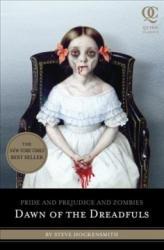
As I’ve mentioned before in my review of Pride and Prejudice and Zombies , I understand the concept of combining this classic piece of romantic literature with its complete obverse; it just felt like it was almost held back from its full potential by adhering to (most of) the original manuscript. With the prequel to this book, Dawn of the Dreadfuls manages to examine the ridiculous nature of this mashup in a way that’s so tongue-in-cheek that the tongue has practically ruptured the cheek entirely.
That is, this prequel doesn’t take itself nearly as seriously as the original Jane Austen adaptation did.
Even if the non-Pride and Prejudice and Zombies characters were mostly cartoonish in their representation of stereotypes and tropes, they were fun to read as they provided a delightful offset to the canonical characters of the Bennet family. Also, instead of trying to find some boring section of text wherein to insert some zombie excitement, Dawn of the Dreadfuls provides equal parts action and society to accommodate a balance that highlighted the extreme disparity between the two. In fact, when the two finally meet, it’s during the exciting climax of the story. Of course, knowing this is a prequel means there has to be some way out of the predicament; otherwise the original Pride and Prejudice and Zombies book cannot take place.
Despite all the things it has going for it, Dawn of the Dreadfuls suffers from a plot that seems to drag along like the un-functioning foot of a zombie. Sure, each plot point has its purpose, but they almost seem to belabor the point. There were a few chapters where I felt the plot to be somewhat repetitive if it weren’t for a slightly different outcome to show character growth. In any case, I’d still prefer this book over Pride and Prejudice and Zombies.
A prequel that could fully explore a ridiculous combination, I give Dawn of the Dreadfuls 3.5 stars out of 5.
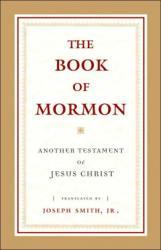
The greatest book of all time.
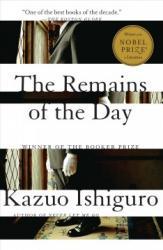
Alright, this book was even worse than Kazuo Ishiguro’s other book(Never Let Me Go). I didn’t know that that was possible, but it is. In this book, an old, traditional English butler takes a road trip along the English countryside. That is it. Oh, I forgot one thing: he does remember some of his dreadfully dull and pointless memories about his career. The main character (the butler) Mr. Stevens doesn’t even show character development by the end of the book. There is one thing that I liked about this book: that it finally got round to finishing.
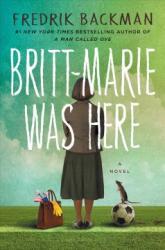
Britt-Marie was Here is the incredible sequel to My Grandmother Asked Me to Tell You She’s Sorry, both of which are fantastic books. Britt-Marie is a picky, stubborn, and socially awkward old woman. She doesn’t criticize or judge people, even if they’re as rude, messy, and vulgar as they are. But hidden inside the busybody is somebody who dreams and imagines, just like the rest of us. When she moves to a new town, she is confronted with people who have muddy floors (an unforgivable sin), disorganized drawers (oh, the horror!), and ‘modern’ hairstyles (Shriek!). This book perfectly captures the everyday messiness and beauty of human life, complete with humor along the way. It will make you look at the curmudgeons in your life a different way!
Reviewer's Grade: 7
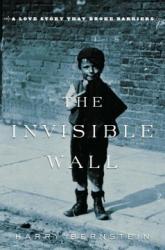
Harry is a small boy living in a war torn part of England. His street is divided by an invisible wall… a wall divided the Jews from the Christians.
There is an unspoken hatred of the other side, and any possible relationship between the two sides is crushed. But what happens when a Jew and a Christian fall in love? Harry’s elder sister begins to love a Christian boy, and is treated horribly for it. She is beaten by her drunken father and shamed by her family and friends. Harry is forced to choose between what he knows to be right and what he has been raised to accept is right.This book is nonfiction.
I gave this book 4 out of 5 stars. It was wonderfully written and I loved the author’s narration. Although, I felt like nothing good ever happened. It seemed like the author was just choosing the most terrible, most horrendous things and depicting that as the everyday life. Who knows? Maybe that’s how it actually was.
Reviewer Grade: 7

Kathy isn’t a normal kid, and neither are any of her friends. They were all cloned, and someday, their vital organs will be harvested until they die. But for now, they will grow up in a secluded boarding school nestled in a corner of England, called Hailshem. Hailshem is idyllic: creativity is nurtured, friends are everywhere, and there are supported teachers. Kathy retells her experiences as she looks back on her life in preparation for her organ donations. And…. that’s basically it. It sounds like a really interesting concept for a book, but the author completely butchered it! His writing drags on and on, and completely bored me to death. If he had written it better, or if someone rewrites it, the book would be fascinating. But the writing style is so dreadfully dull. I warn you-- do not read this book! You will seriously regret it if you do!
Reviewer Grade: 7
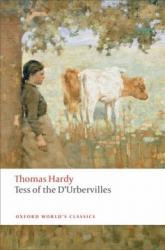
Written in the Victorian Era, Tess of the d’Urbervilles by Thomas Hardy follows the story of Tess Durbeyfield and her tragic downfall. When Tess’s father discovers that he is the descendant of an ancient noble family, the d’Urbervilles, he sends Tess to the d’Urberville mansion hoping that Mrs.
d’Urberville will make Tess’s fortune. After being forced to take a job at the mansion to provide for her family, Tess is taken advantage of by Alec d’Urberville and is forced to live in shame and exile. After meeting a man named Angel Clare, Tess and Angel fall in love, but Tess has neither the strength nor the heart to tell Angel of her shameful secret. When she finally does, her secret tears their relationship apart, but will their love triumph over this “sin” ? This novel by Hardy truly reveals the division of men and women during the Victorian period and how a sin commited by a woman, even if not by her own fault, had everlasting consequences back then. I recommend this book to mature readers, as there is mature content and sexual references, but I highly recommend reading it because it holds both culture and themes that are present even in modern society.
Reviewer Grade: 12
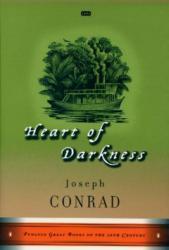
What is the Heart of Darkness? Is it a metaphorical thing such as thoughts and mindsets, or is it a literal tangible place? Joseph Conrad’s novel follows the story of Marlow, an introspective sailor, who recounts his journey up the Congo River to five men who are on the same ship as Marlow:
the Director of Companies, who is also the captain and host, the Lawyer, the Accountant, Marlow, and the unnamed Narrator. What’s interesting is that the story is told from the point of view of the unnamed narrator who is conveying to the readers what marlow is telling him. Marlow explains in detail of his journey into the African Continent and his venture up the Congo River. He tells of acts of imperialism, acts of racism, and acts of evil commited within the region. The Heart of Darkness has gained much praise and criticism since its release, nevertheless it explores Conrad’s view of evil and darkness, but also leaves it up to the reader to make their own conclusion. I recommend this novel to readers who are seniors in high school or above because this novel is extremely difficult to read as Conrad’s style is very complex. To fully experience the novel, one must read it multiple times.
Reviewer Grade: 12

Twilight, Count Von Count, Nosferatu, where do all of these vampire themed genres come from? Also, where do all the vampire cliches come from? I mean why do they hate garlic, can only be killed with a steak through the heart, and have no reflection in a mirror? All of this goes back to the novel Dracula by Bram Stoker. This 1897 gothic horror novel was written during the Victorian Era, a period many consider of high etiquette and stern morality.
The best part about this novel is that there is no one point of view, the story is written in segments of diary entries and newspaper articles. We get to see the story from multiple characters’ views, which is absolutely phenomenal because it creates dramatic irony and suspense. In Dracula, we follow the story of 7 people as they discover the existence of Count Dracula as a vampire. When one of the 7 become a victim of the Count, the rest set out to exterminate the Count and rid him of the world. I recommend this book to all readers (high school and above as the vocabulary and style is somewhat
difficult) as this teaches all of us about the evolution of contemporary culture and the culture of the Victorian Era. Reviewer Grade 12.
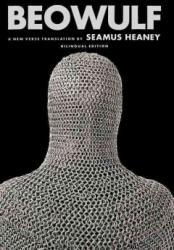
The mighty hero triumphs over evil and saves the people from utter destruction. Sound familiar? Of course it does, it’s the basic plot line of the cliche hero’s tale that everybody knows. However, all of these tales most likely spawned from Beowulf, the oldest surviving English poem written in Anglo - Saxon around the 11th Century A.D. Beowulf is an epic poem that begins with Hrothgar, King of the Danes. Hrothgar’s people live in peace when they are attacked and threatened by a monster named Grendel, who kills off the Danes everynight in their mead-hall, Heorot. So in comes Beowulf son of Ecgtheow, a mighty warrior from Geatland who promises to defeat Grendel and bring prosperity back to the Danes. Beowulf is an amazing poem as it not only tells the classic tale of the epic hero and his journey, but contains hidden meanings aside from literal. Beowulf has no known author, but contains elements of factual history, which tells us this may be a tale describing actual events. This piece of literature is a traditional master piece and should be preserved as an example of how words and tales can evolve over decades. Reviewer Grade 12.
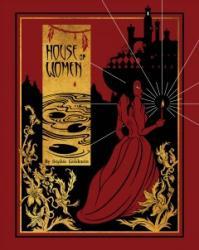
What happened to the last expedition? Was the last expedition male? Where are the male of the local species? Is Jael the only male in the area? Has he created his own harem of native women, driving off the males with his pheromones?
I found this book on a must read list from NPR for 2017. It looked interesting and had a fascinating synopsis and review. I read it, liked the drawings and wanted to know who “Jael” was from the story. The last interaction between the women is about his criminal history. Aphra asks Sarai what it says and she responds with “It doesn’t matter.” However, I suspect it does, I think it had a direct impact on everything that occurred in the story. The author did a good job of “setting the hook” with that closure. Considering the dream fish sequence, I think it was intentional. As I reread the story a few more times, elements that seemed trivial began to come together and illuminate more of the story. I think it is worth a read, or several reads.
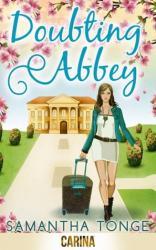
Very stereotypical chick lit. Not particularly well-written but I finished it so it was okay.
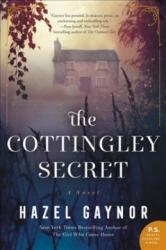
“ I said my story had many beginnings, and the day the camera arrived was one of them. After all, without the camera, there wouldn’t have been any photographs. Without the camera, I wouldn’t have a story to tell...”
The Cottingley Secret is a story about fairies, Sir Arthur Conan Doyle, and an old bookshop in a Irish harbor town, what is not to love about this book.
This story is a modern retelling of the real historical legend of the Cottingley Fairies. After coming to live with her cousin Elsie Wright in Cottingley England, during the height of the first world war, Frances Griffiths and her cousin both claim to see real live fairies at the bottom of the garden. The cousins soon prove their claims by photographing the fairies in the garden. These real live photos soon catches the attention of Sir Arthur Conan Doyle, who wholeheartedly believes the girls and proceeds to publish several of these photos in a magazine. Soon after, the girls and the fairies became a national sensation and through the country into the grip of fairy fever. This marks the beginning of a time that would define their lives and have them keeping secrets until the day of their deaths.
Meanwhile in modern day Ireland, Olivia Cavanaugh inherits her grandfather’s bookshop and soon discovers a manuscript that recounts the story of Elsie Wright and Frances Griffiths. As she reads through the manuscript, written by Frances, she soon discovers she has more in common with her than she ever imagined.
Hazel Gaynor connects past and present in a way that is both modern and extremely touching. I really connected with Olivia in this book. As she, and the reader, reads through Frances and Elsie’s story, she finds strength to face her painful past and let go of a life that has always been planned out for her to pursue a life that connects her to the desires of her heart.
Filled with amazing literary prose, a beautiful atmospheric environment and strong characters, this story is historical literary fantasy at it’s best.
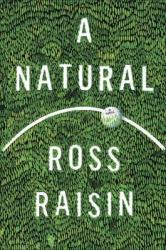
***THIS BOOK WAS RECEIVED FROM A GOODREADS GIVEAWAY***
This book was, without a doubt, the gayest book I’ve ever read. Usually, I don’t read books with LGBTQ+ themes, but the cover and title led me to believe it was about soccer (or, in this case, football). I am not against books with these themes, per se, as long as the characters are likable and relatable. It’s just I would hope that Random House isn’t merely publishing books with these themes to get “automatic” sales from people who want to support the LGBTQ+ movement. Unfortunately, based on the weakness of the story in A Natural, I suspect this as the only reason a large publisher released it.
For a book I thought was about football, actual instances of the sport being played collectively comprises perhaps 1% of the entire book. That’s roughly 3.86 pages of football in a book about football players. If you’re looking for tension and action on the pitch, you’d be better off reading something like The Rook Crew instead of this. So, instead of football, what does this book have in it? In a nutshell: sexual assault, rape, and homophobia. I would have hoped that a story about coming to terms with a young man’s sexuality would have been more inspiring, but the undertone of the narrative certainly feels against the idea.
Like I mentioned above, I could let most of this slide if the characters were interesting. Instead, we’re left with a loner football player who gets in a relationship with someone involved with the team. I don’t know why the main character decided to do this, as the characters are all pretty flat. On top of this, we have to follow a side-plot of a failed marriage included only for a minor (and predictable) plot point near the end. I was actually more taken aback by the sexual abuse that was allowed/permitted as part of the team’s “hazing” than the gay sex scenes that lacked any description at all. By the end, nothing was resolved, and I felt unfulfilled. I honestly failed to see the point of this book, other than a cash grab.
A boring book with boring characters playing a boring sport, I give A Natural 1.5 stars out of 5.
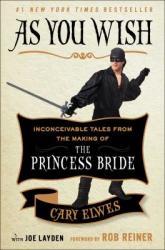
While I love audiobooks for their capacity to let me mindlessly absorb books while I’m driving to or from work, much of the story comes down to the narrator and their inflections. Sometimes these narrators can be annoying, or incomprehensible, or vary their volume too much. It is a rare treat to find an audiobook that fully capitalizes on the medium, either by adding music and sound effects or (in this case) using the voices of actual people to narrate the story. As You Wish is just such an audiobook, and I would even go so far to say it is the superior version of this book, even without “reading” it for myself.
As one of the most frequent and common of quotable movies, The Princess Bride (1987) is an odd little film that just works. It’s fantasy, it’s comedy, it’s family-friendly. It’s all these things and more. But what about the people who made it happen? There have been horror stories of narcissistic directors or difficult actors making successful films, even despite their personalities. Fortunately, this most beloved of classics was not like that at all. All the behind-the-scenes stories helped to add an understanding and depth to The Princess Bride that should appeal to both diehard fans and those unfamiliar with the film.
Cary Elwes does a fantastic job of stringing these stories together while also exploring the backgrounds of all the characters (and the actors who played them). While the other actors do get their say in this audiobook, it’s Elwes’ impersonations of many of the individuals that was hilariously on point. He takes a humble and even-handed approach to storytelling that brings the listener into the midst of the filmmaking process without letting his personality get in the way of recounting historical events. Whether you’re a fan of the movie or a fan of audiobooks, his book is absolutely worth a listen.
A superb audiobook that everyone should listen to, I give As You Wish 5.0 stars out of 5.
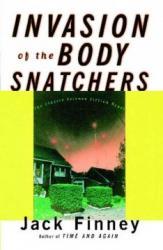
Most people know this book by its numerous film adaptations, including Invasion of the Body Snatchers (1956 and 1978), Body Snatchers (1993), and The Invasion (2007). In fact, I like to think that many facets of this story have become a part of popular culture, including the replication “pods” and Donald Sutherland’s scream in the 1978 film version. While the source material is inherently pulpy, a result of the genre and the era in which it was published, there is an entertaining quality to the story that has allowed it to survive for so long.
Simple in its execution, but brilliant in its reveal, The Body Snatchers builds up an inherent distrust of the people surrounding the main characters as they investigate why everyone seems “off” in this small, California town. While the full explanation of the aliens’ presence and purpose is relegated to an enormous information dump more than half-way through the book, it nevertheless contains some interesting ideas and concepts that could be plausible given the circumstances. I would have preferred better integration of this information into the plot, but sometimes the characters just need to sit down and explore these ideas in depth.
In the end, The Body Snatchers has plenty of strong moments in its plot. Sure, there’s the weaker section or two, and the more upbeat ending didn’t have much explanation other than the aliens’ annoyance of humanity’s persistence. Still, it’s a fun story, and even decades later it’s clear why The Body Snatchers is a timeless classic, even if it’s not “on par” with more significant literary titans. Maybe that’s its charm, though. By making it about the “everyman,” the horror and terror of everyone around them being replaced by emotionless beings is much more relatable on a visceral level.
A timeless pulp classic, I give The Body Snatchers 4.0 stars out of 5.
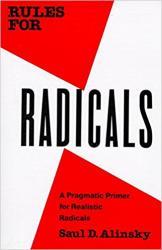
Rules for Radicals is a complicated book and yet one i find myself applying more and more to my everyday life as time wears on. It was written by a lifelong political organizer and social reformer and is a guide he wrote on these topics when his health started to fail. The title may sound extreme and certainly some of its content is, the majority of its pages are simple and can be applied to much of one’s life in the form of philosophy. It covers topics from government to culture and how they should operate, how to tell if they are corrupt, and when corrupt if they should be reformed or replaced. In an age of vast political change I see this easily being applied to many facets of life.


